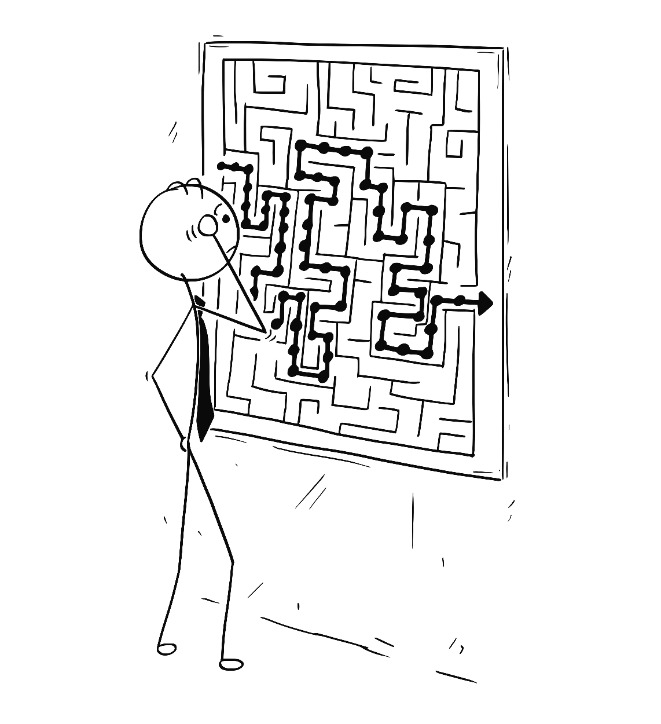An exploration of some of the implications of Arie P. de Geus insight that “The ability to learn faster than competitors may be the only sustainable competitive advantage.”
Startups Where “We Are All In This Together” Learn Faster
“The ability to learn faster than competitors may be the only sustainable competitive advantage.”
Arie P. de Geus in “Planning as Learning” in HBR March-April 1988
 In “Planning as Learning” Arie P. de Geus offers an interesting contrast between two bird species–titmouse and robin–based on an article by Jeff S. Wyles, Joseph G. Kunkel, and Allan C. Wilson, “Birds, Behavior and Anatomical Evolution,” Proceedings of the National Academy of Sciences, USA, July 1983.
In “Planning as Learning” Arie P. de Geus offers an interesting contrast between two bird species–titmouse and robin–based on an article by Jeff S. Wyles, Joseph G. Kunkel, and Allan C. Wilson, “Birds, Behavior and Anatomical Evolution,” Proceedings of the National Academy of Sciences, USA, July 1983.
“Human beings aren’t the only ones whose learning ability is directly related to their ability to convey information. As a species, birds have great potential to learn, but there are important differences among them. Titmice, for example, move in flocks and mix freely, while robins live in well-defined parts of the garden and for the most part communicate antagonistically across the borders of their territories.
Virtually all the titmice in the U.K. quickly learned how to pierce the seals of milk bottles left at doorsteps. But robins as a group will never learn to do this (though individual birds may) because their capacity for institutional learning is low; one bird’s knowledge does not spread.
The same phenomenon occurs in management teams that work by mandate. The best learning takes place in teams that accept that the whole is larger than the sum of the parts, that there is a good that transcends the individual.”
Arie P. de Geus in “Planning as Learning” in HBR March-April 1988
One technique I learned at Cisco when James Kouzes gave a talk based on his 1987 book “The Leadership Challenge” was to have everyone on a team in a team meeting answer the question “what have you learned in the last month that will enable you to do a better job next month?” It’s surprising effective. Kouzes and Posner list five practices for leaders in the book that I have found helpful
- Model the Way: team members may listen to what you have to say, but they will always observe your actions. Take care to provide that your example models practices that you want to become part of the culture.
- Inspire a Shared Vision: it can start with your vision, but that’s just the first draft. Significant improvements will come only after the team has started moving forward. Periodic adjustments and renewals require input from those closest to the customer and the operating realities of the business.
- Challenge the Process: startups begin by challenging the status quo and thrive by continuing to deliver better results–this requires raising the bar of shared expectations.
- Enable Others to Act: successful delegation and effective teamwork take practice and the art of mutual adjustment to take full advantage of individual strengths and minimize the impact of weaknesses. You can listen to and learn from others. You can teach others. You can unlock a shared performance level higher than a simple sum of individual capabilities.
- Encourage the Heart: to go any distance, you need a shared mission, trust, and support from others when you stumble or become dispirited. Startups are an emotional roller coaster: it’s precisely when you are at a low point that you need to get your mind off of yourself and help others who are at an even lower point.
Related Blog Posts
- Wynton Marsalis on Humility, Self-Mastery, and Learning
- Learning the Right Lessons From Failure
- Impatience For Success Works Against Learning
Image source: licensed from https://www.123rf.com/profile_zdeneksasek

Pingback: SKMurphy, Inc. » Quotes For Entrepreneurs–February 2013
Pingback: SKMurphy, Inc. Ten Rules of Thumb from"101 Things I Learned in Engineering School" - SKMurphy, Inc.
Pingback: SKMurphy, Inc. Planning and Reflection - SKMurphy, Inc.